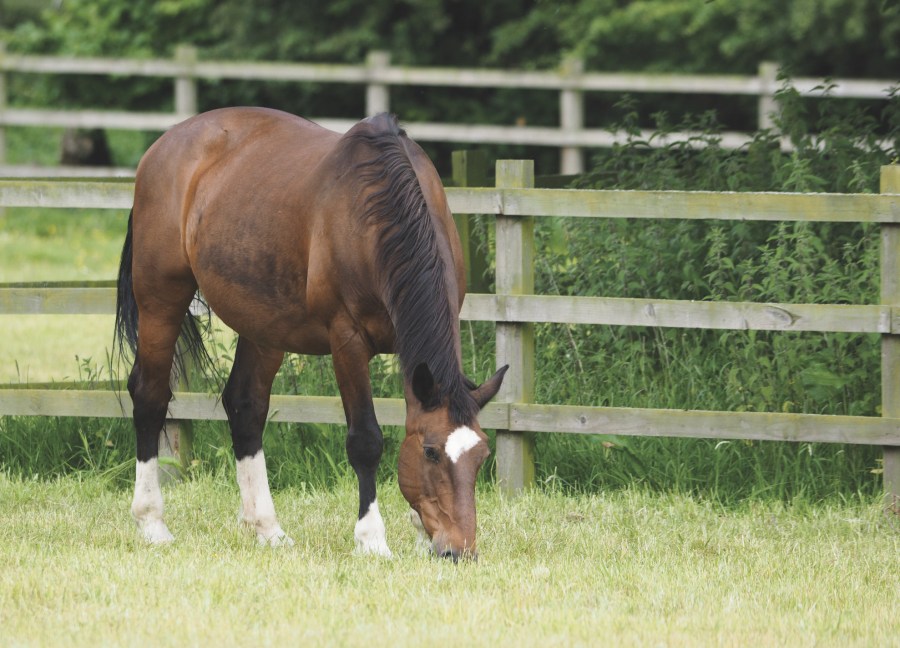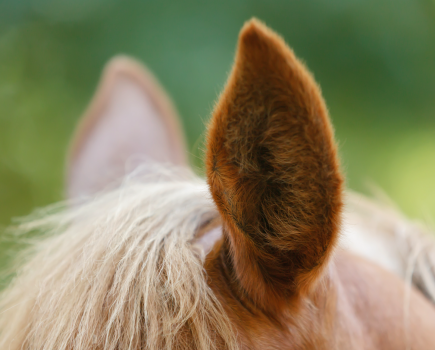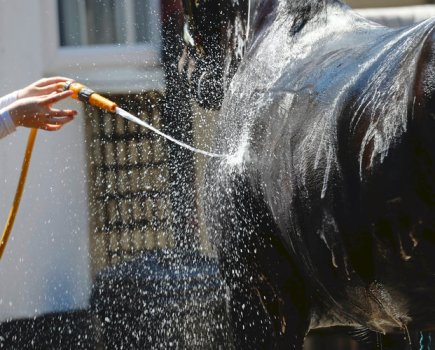Horses are designed to lose weight through winter and put it back on in spring, but modern management means our horses are often already overweight at this time of year. Vet Lucy Grieve explains how to limit weight gain this season.
Increase movement
Once you are confident your horse is happy and healthy, a great way to burn calories is through exercise.
“Work is so overlooked in the battle against obesity,” says Lucy. “People should be doing as much with their horses as they can. Life and work can get in the way, but raising the workload in anticipation of the grass is really important. Exercise not only improves weight loss, but it also increases their metabolic rate and insulin sensitivity, which protects against weight gain and laminitis – it’s a win-win.”
How much you do depends on your individual horse.
“It’s very different between horses, but in simple terms, the more you do the better – you can’t do too much exercise with your horse so long as they are fit and sound. They are naturally athletic animals and benefit from keeping moving as is appropriate for their breed.”
Lucy advises plenty of hacking for all horses.
“It really is the best type of exercise in a way because it’s not putting a lot of strain on the joints like schooling or jumping,” she says. “It’s very natural exercise. Even if it’s an older horse, the more walking you can do, the better. You could go for two or three hours a day in walk and a bit of trot. If you struggle for time, consider asking someone to help hack your horse.”
Paddock track systems can also help increase your horse’s daily step count.
“Even if you can’t create a full track system, try spreading things out. Have the water across the field from the gate and put any hay or toys scattered elsewhere in the middle to encourage the horse to walk and move more.”
Reduce feed
Late winter and early spring are great times to reduce, or even stop, your horse’s hard feed calories, whilst continuing with a feed balancer so that his diet remains balanced.
“Don’t worry about them being a bit hungrier in the lead-up to the spring grass coming through,” explains Lucy. “People often wait for the spring proper until they change their routine and feed amounts, whereas I argue that it’s better to start doing it a bit earlier – they might even have lost a few kilograms by that point.”
The weather can play a role – very cold winters will see horses using more energy to stay warm, but in mild winters like we’ve had this year, they are probably not using as much energy to stay warm, and therefore February is a good time to start reducing your winter ration.
“Even taking rugs off, or putting lighter rugs on just to keep them clean, and reducing forage will make a difference,” says Lucy. “Reduce hard feed first, while keeping them on a balancer, and if they are still maintaining their weight, or putting it on, you can start to reduce the forage calories too, by feeding low-energy hay and/ or soaking it. The general rule is to feed at least 2% of their body weight in forage, but sports horses and finer breeds might need more.”
Split the ration into smaller amounts and slow down their intake.
“Trickle-feeding is key – small-holed haynets, forage feeders or hanging up small, multiple haynets around the stable to add variety so they can pick and choose are good options,” says Lucy. “You could use treat balls for any balancer/ hard feed as long as it doesn’t come out too quickly, otherwise it defeats the point.
“People worry about horses running out of hay overnight, but they naturally eat less through the night and their stomachs produce less acid, so it’s better that they have less hay at night than through the day if they are going for any periods without.”
Spring health check list
Help your horse stay a health weight this spring by:
- Carrying out a health MOT (including discussing a Cushing’s test for older horses with your vet)
- Having his back and tack fit checked
- Organising a dental check up
- Ensuring vaccines are up to date
- Consulting with your vet over the most effective worming schedule
- Adjusting feed
- Reducing number/ weight of rugs used
- Increasing exercise
- Decreasing/ managing amount of grazing
- Increasing exercise/ activity levels
Meet the expert: Lucy Grieve MA VetMB MRCVS is an ambulatory vet at Rossdales in Newmarket. She works with all types of horses, from happy hackers through to amateur sports horses and elite racehorses. Her main areas of interest are lameness, diagnostic imaging and poor performance, and she is passionate about maximising the welfare of the horse at all times.
Check out our subscription offer









